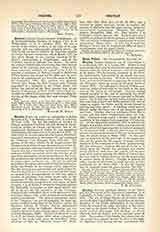

Gratian, (Gratianus), Johannes. The little that is known concerning the author of the “Concordantia discordantium canonum”, more generally called the “Decretum Gratiani”, is furnished by that work itself, its earliest copies, and its twelfth-century “summa” or abridgments. Gratian was born in Italy, perhaps at Chiusi, in Tuscany. He became a Camaldolese monk (some say a Benedictine), and taught at Bologna in the monastery of SS. Felix and Nabor. Later, it was said that he was a brother of Peter Lombard, author of the “Liber Sententiarum”, and of Peter Comestor, author of the “Historia Scholastica”. Mediaeval scholars united in this way, by a fictive kinship, the three great contemporaries who seemed as the fathers of canon law, theology, and Biblical history. It is no less false to assert that he was a bishop. Nor is it certain at what time he compiled the “Decretum”. It did not exist previous to 1139; for it contains decrees of the Second Lateran Council, held in that year. A common opinion places its completion in 1151. Recent research, however, points to 1140, or to a date nearer thereto than to 1151. The “Decretum” was certainly known to Peter Lombard, for he makes use of it in his “Liber Sententiarum”. Gratian died before the Third Lateran Council (1179), some say as early as 1160. It is not certain that he died at Bologna, though in that city a monument was erected to him in the church of St. Petronius. He is the true founder of the science of canon law. See Corpus Juris Canonici; Decretals, Papal.
A. VAN HOVE

